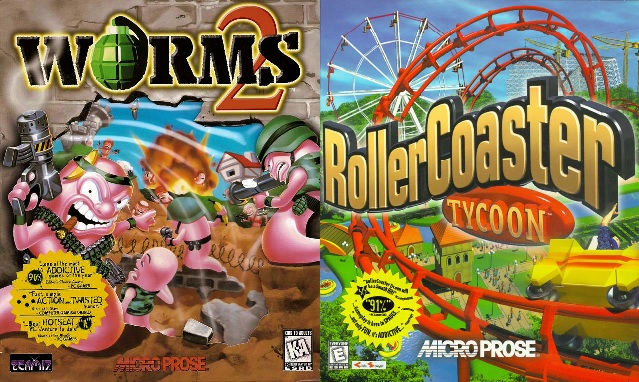The Dynamix of Game Arts Making Impressions That Opened a Valve: Sierra Subsidiary Contributions
- baronsfel001
- Jul 22, 2023
- 7 min read

I want to make it clear up-front: I do not consider myself a Sierra fan. I have not and will never hold and pursue collection of their historical library like I do with LucasArts and MicroProse. I grant due respect to their pioneering work in the graphic adventure genre but will not fail to emphasize how, despite success, they also garnered negative reputation for oft-illogical puzzles, cheap deaths and unfair traps. Though I should probably disclaim that I'm not generally a fan of the adventure genre; I make a key exception for LucasArts but that's likely because their adventures hit a sweet spot specifically by avoiding Sierra-style design mistakes.
The prosperity that came with being a pioneer granted Sierra the position of becoming one of computer gaming's early empires in the 80s, a position of which they took advantage along with their successful contemporaries such as Richard Garriott's (a Texan, by the way) Origin Systems. Their expansion to new technological levels began after a trip to Japan that resulted in Sierra becoming the US publisher of the prominent works of Game Arts, would would build a significant reputation in console RPGs following their Sierra relationship (one which happened to correspond with Sega). The Williams even once made a buyout offer to id Software while they were developing Wolfenstein 3d, one id declined but had they not it could've nipped the entire shareware revolution in its early-90s bud.
Unlike many gaming empires Sierra never stopped producing their own original titles though the games they made in-house were rarely hardware-pushers. That's a different fact from their taking advantage of new technologies, King's Quest IV being the first PC game to support both Adlib and Roland LA audio and the studio was never afraid of stepping out on their support of alternative consumer options: PCjr, IBM Music Feature Card (plus the Yamaha FB-01 unit on which it was based), MCGA, IBM PS/1, and not a few games supporting stereo music exclusively via dual-OPL2 hardware like Media Vision's Pro Audio Spectrum. Adlib and Roland support became industry standards by 1990 and plenty of other companies supported both earlier, but it was usually Sierra leading the way and they showed how far they went out on that limb by offering the hardware itself for order in their catalogs.
Sierra's subsidiaries, on the other hand, always seemed to be looking for best audiovisual flair at a time IBM PC compatibles were becoming the market mainstream but still not particularly suitable as gaming machines. Today the Sierra name still carries commanding weight both historically and in market reach, though it has long stopped existing as the West Coast-based family company led by Ken and Roberta Williams (now retired from gaming production though they still consult from time to time). Many Sierra family members are defunct or, like Sierra itself, operating under new identities, though one in particular (and everyone should know which) has asserted itself as perhaps today's biggest PC gaming empire.
The rest of this post will be my own thoughts and experiences with a fraction of these subsidiaries...

I have only peripheral experience with Game Arts and it is oriented towards their later games made for Sega consoles, but it still piqued my interest to discover their ports from Japanese computers (typically NEC models) pushed IBM PC compatibles years before id Software would do the same. Only a handful of Game Arts titles made it to the Western Hemisphere under Sierra's banner but they carried technical impact beyond their gameplay. It went to show that even in the heyday of 80286 processors there was vast potential for the PC beyond use as an office workstation.
Thexder is not for everyone (Nintendo-hard difficulty) but it made enough impact that the license was chosen by Sierra for a new original entry made with Microsoft Games SDK, the first edition of DirectX. Only the Macintosh port in 1990 supported Roland MT-32 leaving its soundtrack inaccessible to most; the PC version premiered in 1987, the year before Sierra began support of Adlib or Roland, so the best way to play the PC edition of the original is with a Tandy 1000 (Kris Asick covered Thexder in a very early episode of his Ancient DOS Games webshow with tests that proved the high-resolution EGA mode less colorful and certainly not worth tolerating PC speaker sound). For those of us with a Roland device the sequel Fire Hawk shines best on PC.
Silpheed was one of those games so innovative it got forgotten in light of newer games that adopted its concepts. I am more familiar with its later Sega CD edition, still debated as to whether it's a sequel or a sophisticated port. The PC version supports full range of sound hardware thus, unlike Thexder, owners of Roland and/or Sound Blaster hardware aren't left out. That being said, one thing to note about the normally unintelligible (and subtitled) voice is that it was made clear only in the special edition made for IBM's exclusive PS/1 audio card.

If I had to choose a Sierra company of which to be a fan, Dynamix would be it. They pushed computer hardware from the beginning, their premiere game Stellar 7 taking the concept of Atari's Battlezone to 8-bit home systems where it got a positive review from author Tom Clancy. Sierra only purchased them in 1990, already having introduced their 3Space engine that would power their best games for years, but the revenue from that acquisition enabled them to grow into all sorts of genres until their collapse after a Sierra restructuring in 2001.
What keeps me coming back to Dynamix is their Aces series, of which the aviation-oriented entries are published under the Great War Planes franchise banner. Dynamix utilized digitized real-life photos for their game screens so much it became a part of their reputation, from the plane's actual cockpit for A-10 Tank Killer to actors posed in backdrops for all their DOS-based Aces games including a hard turn from aviation to another type of warfare in Aces of the Deep. Couple that with the amazing Adlib and Roland sound support and it is small wonder the Aces games succeeded in: 1) Red Baron and its sequel remain today THE standard in WWI simulations; 2) Aces of the Pacific and Aces Over Europe reset the standard established by Lucasfilm's WWII air combat trilogy which would soon be succeeded in turn by 1942: The Pacific Air War by MicroProse (though each of the above games operated on different concepts and are all still worth playing); 3) Aces of the Deep superseded the WWII submarine simulation standard then set with Silent Service II by MicroProse and would be succeeded years later with the Silent Hunter series by Strategic Simulations.
That genre diversification mentioned earlier is actually so vast it won't be covered in this post. Designer Jeff Tunnell in 1992 introduced a series that actually DEFIED genres in The Incredible Machine, and later his production studio would develop the 3-D Ultra franchise of which the first pinball entry was arguably better then its inspiration, Sierra's infamous original strategy game Outpost. Dynamix's biggest legacy today is probably its mech shooters, but they also dabbled in sports and unique casual games.

As with Dynamix Impressions had operated independently for years before their Sierra association but, while Dynamix explored numerous genres, Impressions focused on wargames. Later this would translate well as Impressions shifted more into the genre for which they built their best reputation standing today: world building simulations such as their flagship Caesar series. They were a company who defined how well different types of strategy games could be made by the same people (MicroProse and its Sid Meier-founded successor Firaxis are other examples).
It was that war strategy focus that first brought them to my attention as I got caught up in the Civil War history craze of the mid-90s which manifested in my parents' willingness to purchase a copy of Robert E. Lee: Civil War General (for the record: that nomenclature was deliberately chosen to draw comparison to SSI's Panzer General). It was my family's first Sierra purchase and the catalogs appealed to my parents enough that they later acquired the Aces Collection Series and Family Fun Pack Collection Series, which should explain my non-traditional perspective of Sierra as a company. It was also my introduction to hex wargaming, something I've observed requires sophisticated design in order to work well.
Caesar, Lords of the Realm, and The Blue & The Gray were all published under the Impressions label but had successors published by Sierra (thus all these originals were republished by Sierra in late 90s series collections); the third of these was succeeded by Civil War General which is not a sequel since the focus and concept of each can hardly be more different. While a fun game in itself, particularly for those who wish to explore the war from a neutral perspective with a special Confederate focus (something that may not succeed in today's political environment), overall Civil War General is the unrefined prototype of the real deal in form of its sequel Grant-Lee-Sherman: Civil War Generals 2. Both, however, included a treat unique to the era for us armchair historians: a multimedia mini-encyclopedia covering the major aspects of the war.

I approach this evaluation from an outsider perspective: as with Sierra itself I'm no big fan of Valve but I acknowledge its importance to gaming history. It is the thing of anecdotes that the chief developer of Doom95 would rise to rule in PC gaming digital distribution (and digital rights management, the poorer part of Steam's reputation). Yet if it wasn't for Sierra's support of the original Half-Life it may never have happened.
What's interesting is that, as far as the big gaming companies go, Valve has relatively few titles in its own library and draws its biggest revenue from ventures such as everything revolving around Steam. Still, the fact is they earned their own way and no one came blame them for how they keep going: the Half-Life and Portal franchises have spawned huge communities, particularly on the modding front, and Valve is directly involved in supporting much of that. Their engines were designed for end-user tinkering (much like id Tech, not surprising seeing how Valve's GoldSrc is a derivative of the Quake engine) and, outside hang-ups regarding Steam DRM (which is arguably at least as much on the publishers as Valve), they are very supportive of the gaming community.
Sierra published Half-Life, its multiple expansions (which got Gearbox Software started, today known for owning Duke Nukem but not doing much with him), and the retail editions of Half-Life 2. This was in the era of the last hurrah for the original Sierra On-Line who would be acquired by Vivendi and close most of the studios that drove them through the 90s. The label sustained for Vivendi's publishing purposes (and continuation of whichever classic Sierra franchises they opted to support) and has recently been revived in a new hearkening back to its original form, but time will tell what fruits that will yield.





Comments